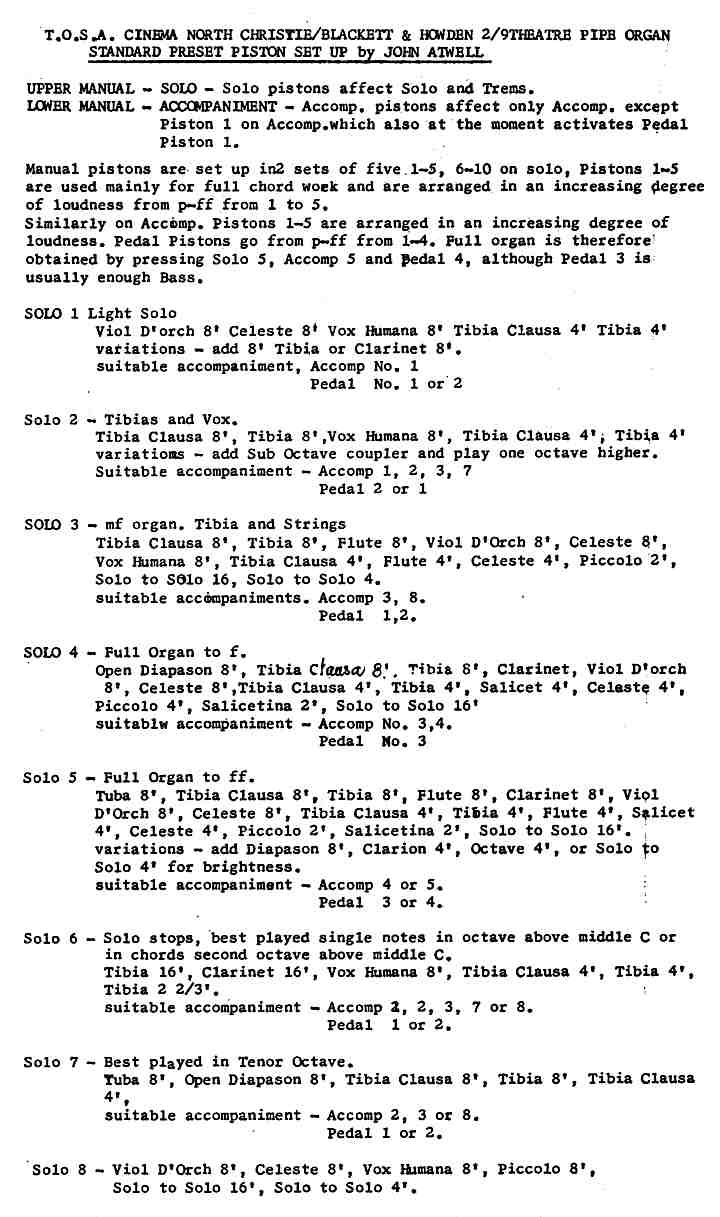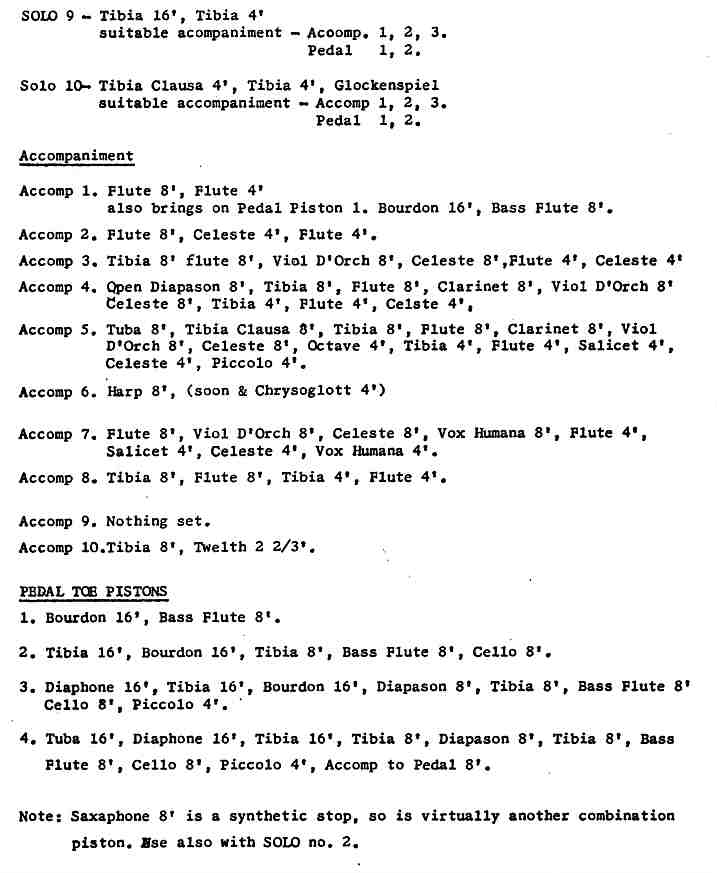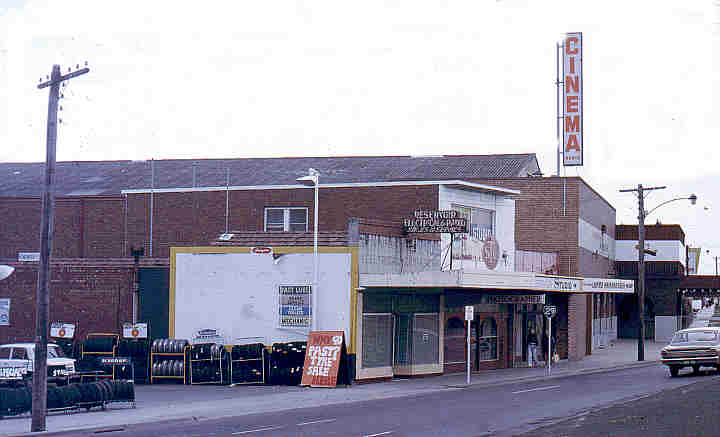
Back to Main Encylopaedia Contents
Cinema North, Reservoir

Following the successful installations of its own organ at the Dendy theatre, Middle Brighton and Moorabbin City Council's organ, the Victorian Division of TOSA took on a more ambitious challenge for its Cinema North project. The two previous projects had involved the installation of complete instruments, both of which were in fully playing order when removed from their original theatre homes. Now, they were starting with an instrument which had no console or relays, and which had not been played, let alone maintained, for years prior to its removal.
The organ in question was built in 1929 by Blackett and Howden of Newcastle-upon-Tyne, England, for the Prince's (later to become the Gaumont, then the Odeon) Cinema in the Tyneside town of North Shields.
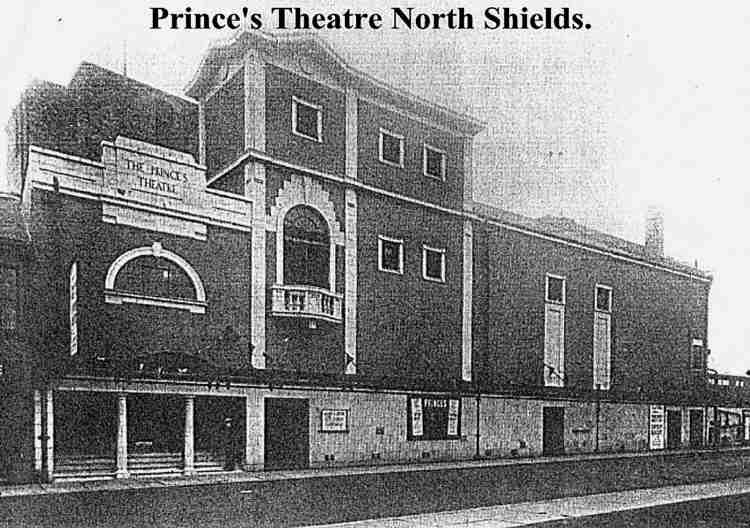
It was the only unit theatre organ ever built by Blackett and Howden, who had installed several non-unit organs in cinemas, mainly around the Tyneside area. It was opened at North Shields by the organist Leslie Ord, [Manning, Clifford S, "Theatre Organs in the British Isles", Cinema Organ, Cinema Organ Society, London, December, 1973, p. 56]and contained eight ranks of pipes controlled from a three-manual console, of which the top manual was a dummy, provided to make the organ look larger and more impressive to the audience.
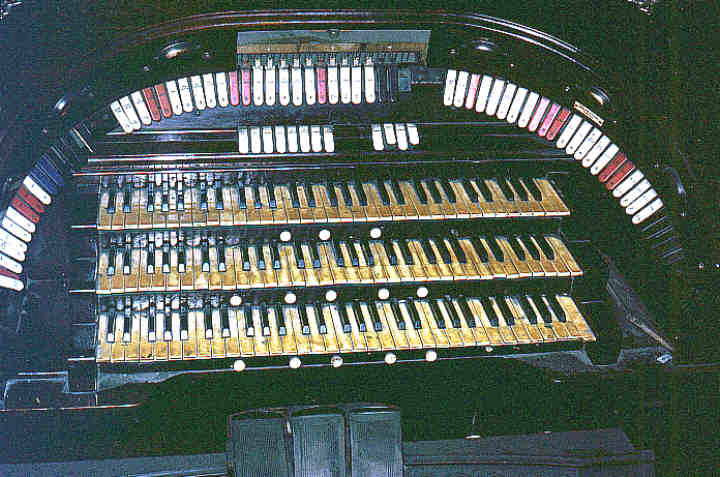
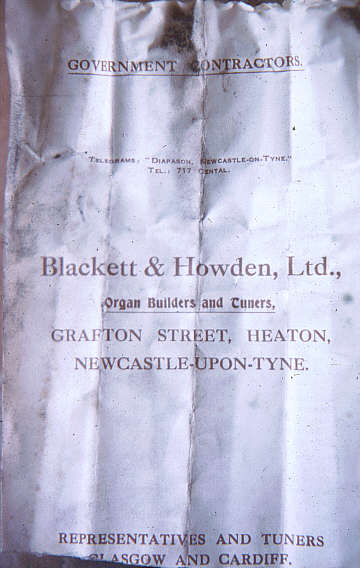 The organ was built at Blackett and
Howden's works in Grafton Street,
Heaton, Newcastle-upon-Tyne, and the
console was displayed at the North East
Trade Fair Exhibi-tion. The flue pipes
were voiced by Syd Goldsmith, the reeds
and strings by Frank Hubbert. [Marsh, Joe,
Letter to Editor, Vox, October, 1973, p. 10]
The organ was built at Blackett and
Howden's works in Grafton Street,
Heaton, Newcastle-upon-Tyne, and the
console was displayed at the North East
Trade Fair Exhibi-tion. The flue pipes
were voiced by Syd Goldsmith, the reeds
and strings by Frank Hubbert. [Marsh, Joe,
Letter to Editor, Vox, October, 1973, p. 10]
In 1932, after Gaumont British took over the theatre, the chambers were modified, with the shutters turned to direct the sound towards the centre of theatre so that it was better focused, the work being carried out by another local organ builder, Vincent of Sunderland:
"The original arrangement gave blind areas of direct sound, and while patrons on the left of the theatre got all the 'um-pah', the ones on the right got all the melody! The alteration enhanced the sound a lot (we are not sure whether the chests were touched at all, but doubt it), balancing the sound properly as it was meant. Blackett & Howden want-ed the shutters as Vincent eventually placed them, but my father (who served his time at Blackett & Howden) can remember arguments and objections from the architect of the theatre at the time of installing the organ, because he didn't want his precious proscenium altered to take the shutters. Hence, he got his way and they were kept back and faced directly down the length of the theatre with no holes in the grilles to let the sound reach the middle of the theatre. This was corrected by Gaumont British, who made the necessary openings on the grille work and had the shutters resited." [Marsh, Joe, Letter to Editor, Vox, October, 1973, p. 10]
From that time on, the console bore a maker's plate stating "Rebuilt by H S Vincent & Co., 1932", with no reference to the true builders. {Console name-plate, noted by Ian McIver, July, 1969]
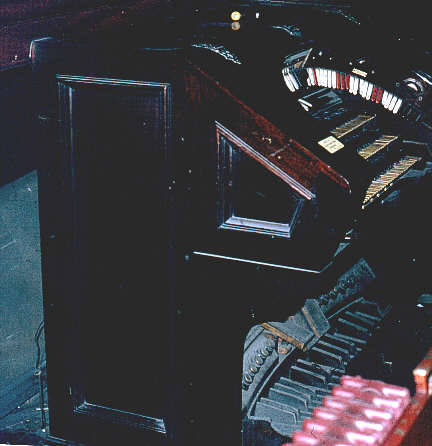
When the organ fell out of use is not known. It was not in working condition when I paid a brief visit to the theatre in July, 1969. The console, in dark varnished wood, was in the centre of the orchestra pit, with a board screwed over the manuals and stopkeys. Apparently this enabled it to serve as a music stand for the conductor of the band which accompanied Christmas pantomimes. The theatre was dingy and squalid with the dirt of years, although still operating as a cinema. I took a few photographs of the derelict console, noted its specification, and left. So little was known about this instrument, that it was listed in the reference books as a three-manual organ. It was not until I examined the console, failing to find any stopkeys for the top manual, and thought to press the keys, that I discovered that it had a dummy manual, with fixed keys. It even had combination pistons below that manual. Shortly afterwards, I heard that the console had been taken out of the pit and broken up.
About a year after my visit, Greg Alabaster, from TOSA (Vic), was visiting England, and purchased the chamber contents of this organ for £75 on behalf of TOSA. He reported that locals had said that the organ had "a beautiful tone with sweet voicing and ample power for the large house." [Vox, July, 1970, p. 4] He removed the organ from the chambers with the assistance of Robert Gliddon from Sydney, packed it into six crates, and despatched it to Australia, where it arrived later that year. [Vox., December, 1970, p. 3]
"On arrival at theatre I was absolutely amazed at the filthy condition of the chambers; everything was covered by a thick layer of greasy dirt. The console was missing, having been broken up some time earlier. However, later whilst exploring backstage we came across the keyboards and some of the casework. Removal of all component parts from the chambers proved to be most difficult, and much credit is due to Greg Alabaster for his untiring efforts in this regard." [Gliddon, Robert, Vox, March, 1973, p. 8]
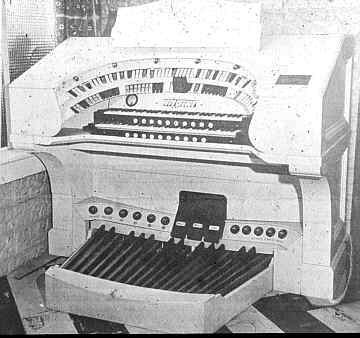 The problem of the missing console was
soon resolved, when TOSA member,
David Cross, sold to the Society the
two-manual Christie console and relays
which he owned (from the Lyceum
Theatre, Sydney), together with relays
and a blower. A proposed specification
for the instrument was published. [Vox,
January/February, 1971, p. 3] It was reported in
April, 1971, that negotiations were
proceeding to install the organ in Cinema
North, Reservoir, and that a 16ft rank of
diaphones had been purchased from Hill,
Norman & Beard Ltd. to be added to it.
[Vox., April, 1971, pages 5 and 8]
The problem of the missing console was
soon resolved, when TOSA member,
David Cross, sold to the Society the
two-manual Christie console and relays
which he owned (from the Lyceum
Theatre, Sydney), together with relays
and a blower. A proposed specification
for the instrument was published. [Vox,
January/February, 1971, p. 3] It was reported in
April, 1971, that negotiations were
proceeding to install the organ in Cinema
North, Reservoir, and that a 16ft rank of
diaphones had been purchased from Hill,
Norman & Beard Ltd. to be added to it.
[Vox., April, 1971, pages 5 and 8]
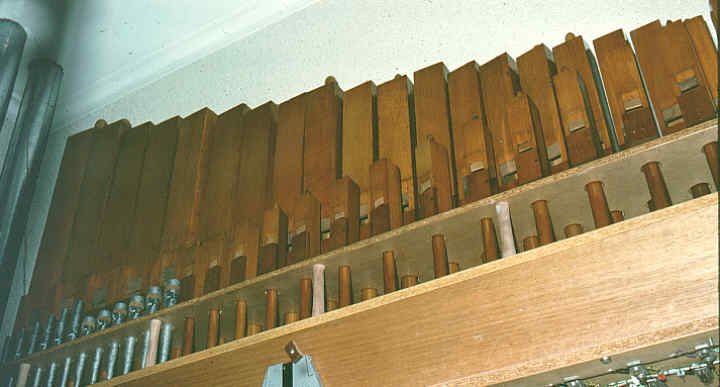
Other additions to the organ included a second Tibia Clausa. This was a Wurlitzer rank, from the eight-rank organ built in 1937 for the Ritz, Hastings, on England's South Coast (Opus 2211). Although it is unusual for an organ of this size to have two Tibias, it was included so as to offer a contrast between wood (Wurlitzer) and metal (Blackett & Howden) tibia ranks. An Aeolian Harp and Compton Glockenspiel were also added.
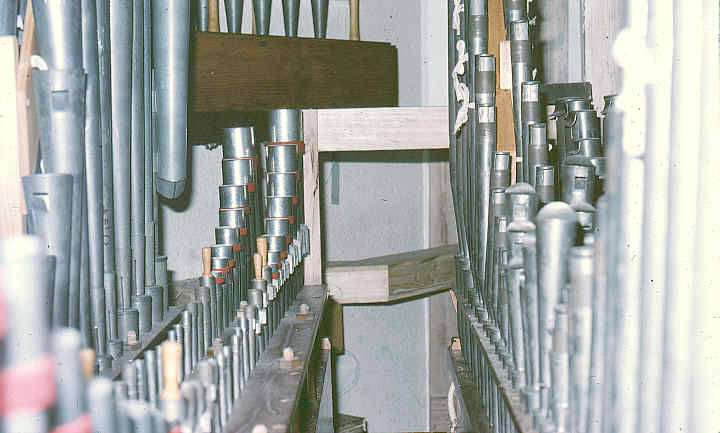
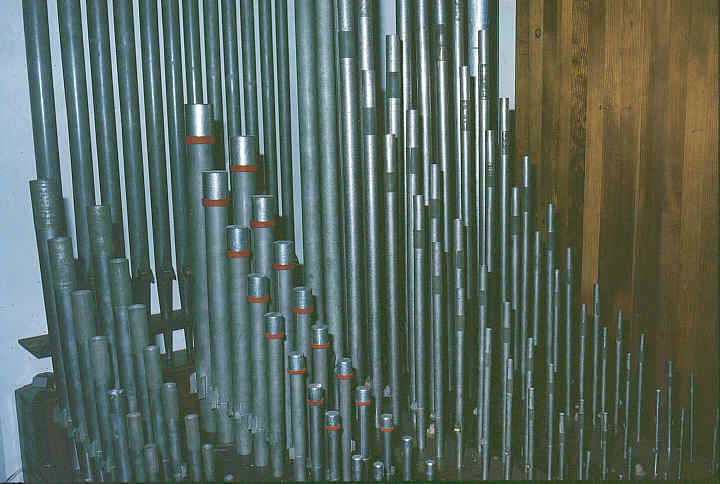
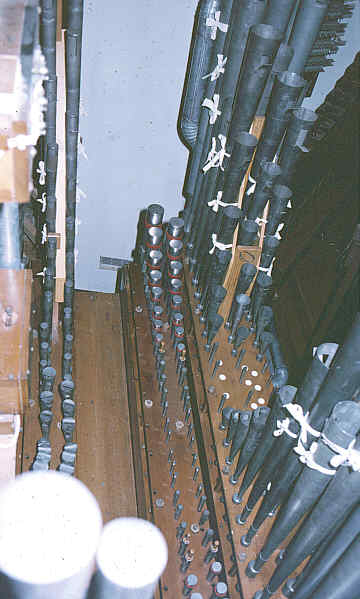 Commenting on the original Blackett &
Howden pipework, Bill Worley wrote to
me:
Commenting on the original Blackett &
Howden pipework, Bill Worley wrote to
me:
"Many of the pipes had sustained damage in transport to Australia and these were sent to a firm of organ builders here in Melbourne (Hill, Norman & Beard) for repairs. Most affected were Clarinets and Tubas, which required re-blocking and straightening of the resonators.
As you will be aware, the instrument was of eight ranks, comprising: Tibia, Diapason, Tuba, Flute, V.D.O., Céleste, Vox and Clarinet. The Flutes are metal and stopped and were at 4ft pitch only. We have added twelve stopped wooden pipes to the bottom of this rank and will provide 2ft pitch with the addition of twelve small flue pipes for the top end, as all our mutations are drawn from this rank. We have also added a set of twelve HN&B metal 16ft diaphones to the bottom of the Diapason rank.
The B&H tibias are of fairly small scale, and break into metal pipes from about Middle C at 8ft. Clarinet and Tubas go harmonic from half-way up compass, the top end of the Tuba being double flue pipes (for which we will need to provide the second set of pipes, since we only received twelve). To complete the pipework we have added a set of Wurlitzer Tibias at 8ft pitch, the bottom end of which is extended to 16ft with six large Compton bass pipes (two-in-one) - you are probably familiar with these very large-scale Tibias.
We have a very miscellaneous set of percussions, the B&H Xylophone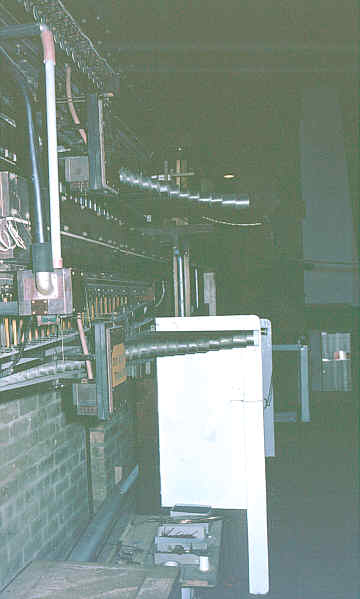 (37 notes) and Chimes (17 notes)
being situated in the solo
chamber, which, by the way, is
fitted with both sets of
horizontally oriented B&H
shutters, controlled by two swell
engines situated on the roof of
the chamber. We have a
Compton Glockenspiel in this
chamber also. A Glockenspiel of
unknown make is fitted in the
main chamber. On the rear wall
of the theatre immediately
behind the screen we have
mounted the six large Compton
bass pipes, a 61-note Aeolian
Harp and a 49-note Christie
Xylophone. All of these are of
course unenclosed. The Christie
Xylo will re-iterate, while the B&H
unit will be single tap only."
[Worley, W M, letter to Ian McIver, 22 April,
1974]
(37 notes) and Chimes (17 notes)
being situated in the solo
chamber, which, by the way, is
fitted with both sets of
horizontally oriented B&H
shutters, controlled by two swell
engines situated on the roof of
the chamber. We have a
Compton Glockenspiel in this
chamber also. A Glockenspiel of
unknown make is fitted in the
main chamber. On the rear wall
of the theatre immediately
behind the screen we have
mounted the six large Compton
bass pipes, a 61-note Aeolian
Harp and a 49-note Christie
Xylophone. All of these are of
course unenclosed. The Christie
Xylo will re-iterate, while the B&H
unit will be single tap only."
[Worley, W M, letter to Ian McIver, 22 April,
1974]
The two-in-one Compton bass pipes referred to were the standard Compton Tibia Bass. The six pipes were fitted with a valve which enabled each pipe to sound one of two notes a semitone apart. Thus, closing the valve on the bottom C pipe would cause it to sound C#, and so on. This device saved not only the cost of additional pipes, but halved the space required for the large bass octave of pipes.
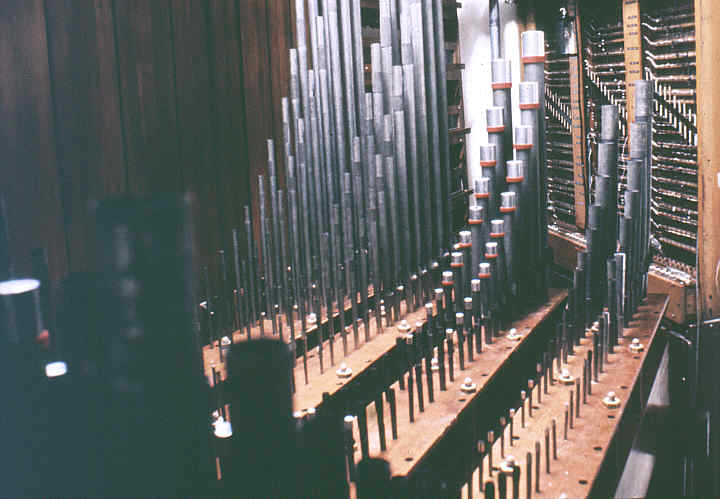
Photo: John Thiele
Opening date was scheduled for 7 December, 1974, but this was deferred to ensure that the instrument would be in top shape. [Vox, November, 1974, p. 3] It was on Sunday, 23 February, 1975, at 2:00 p.m. that Tony Fenelon rose from the pit at the elegant console, playing "Another Opening, Another Show", to inaugurate TOSA's second instrument and launch a memorable concert which also featured organists David Johnston and John Atwell.
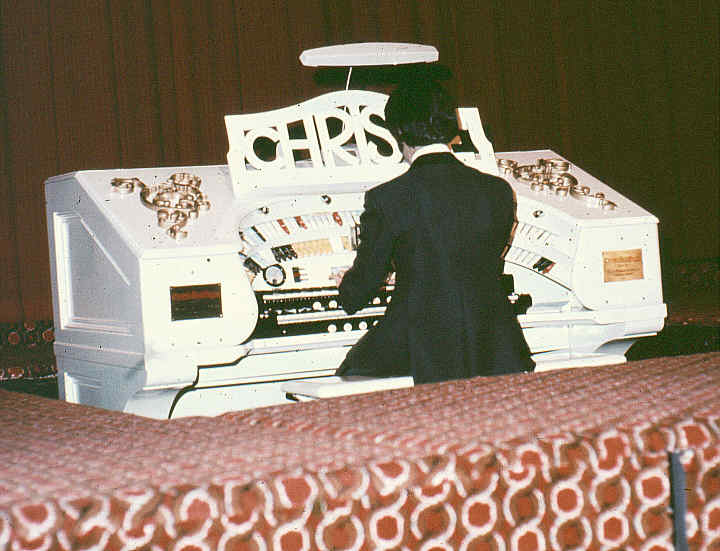
Above photo: John Thiele
Tony Fenelon brings up the console at the opening concert
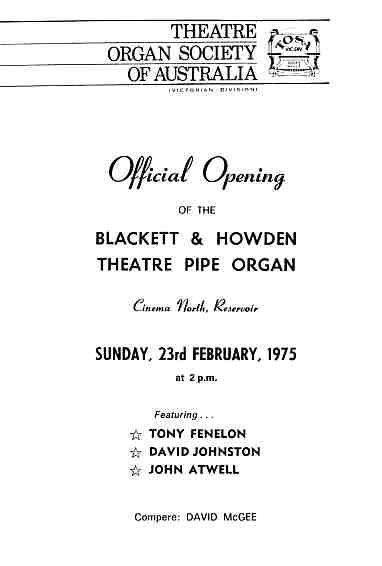
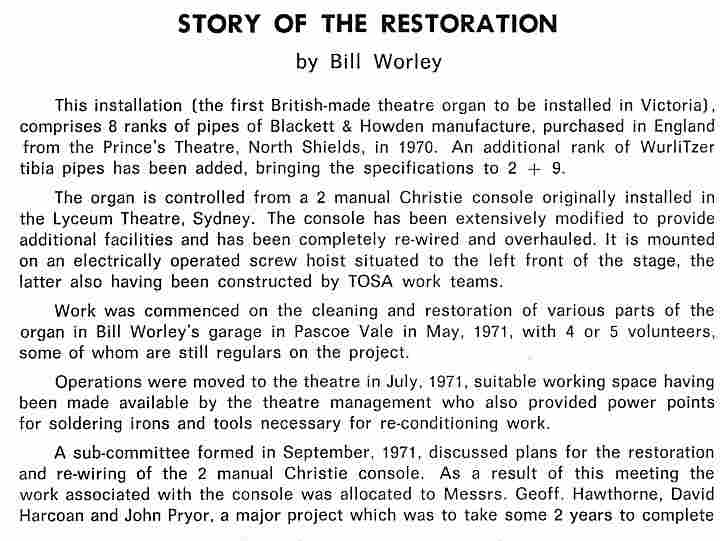
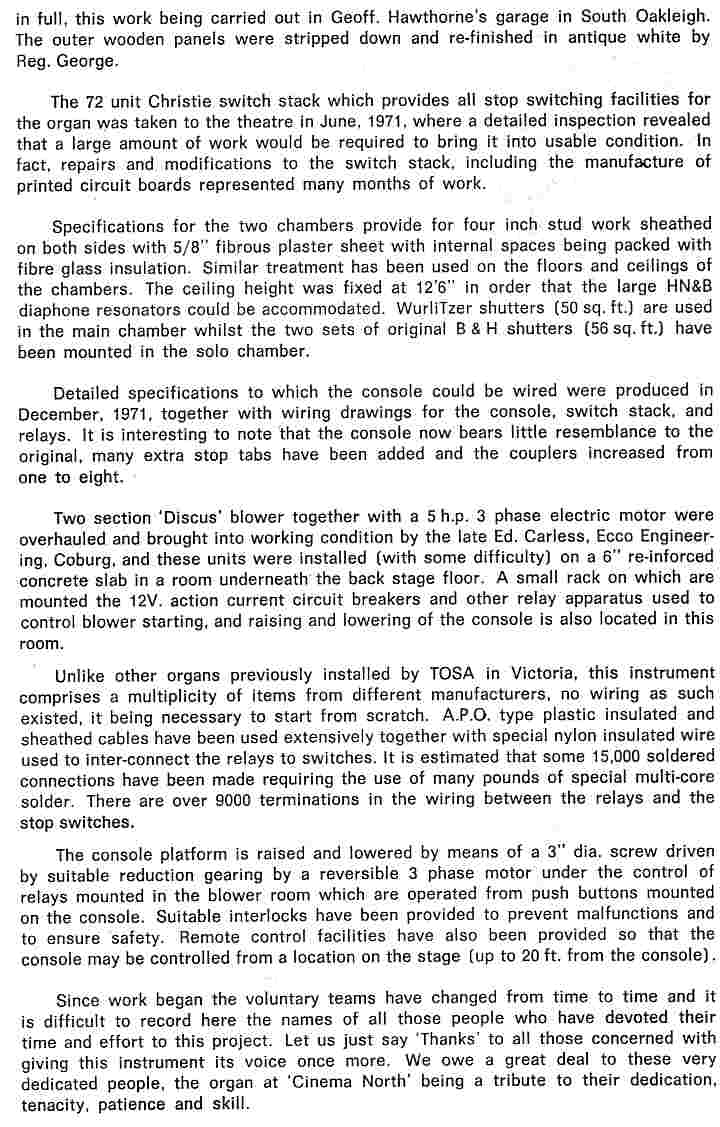
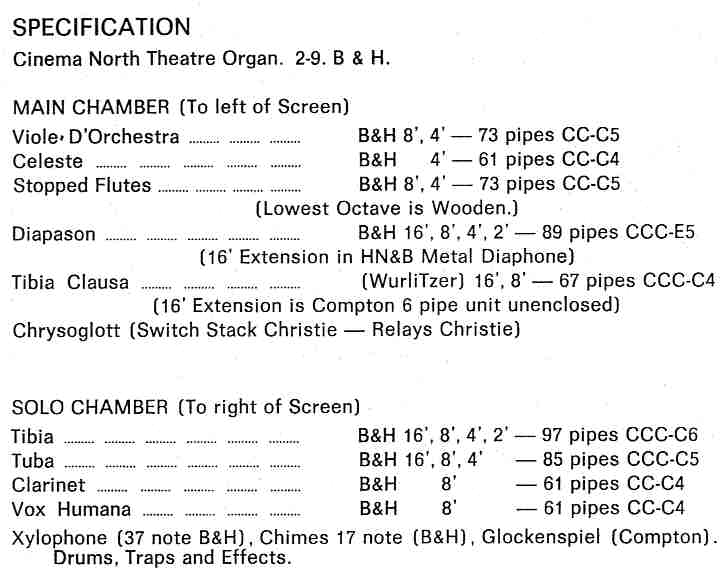
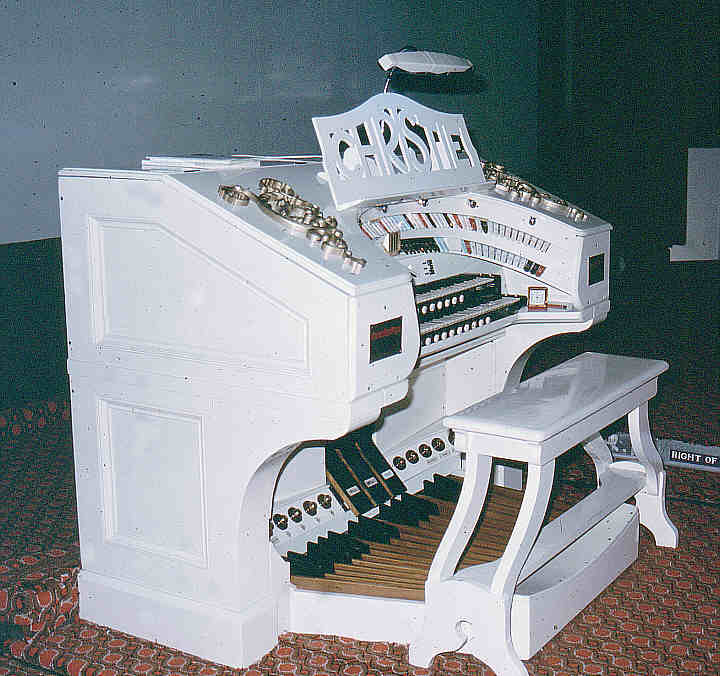
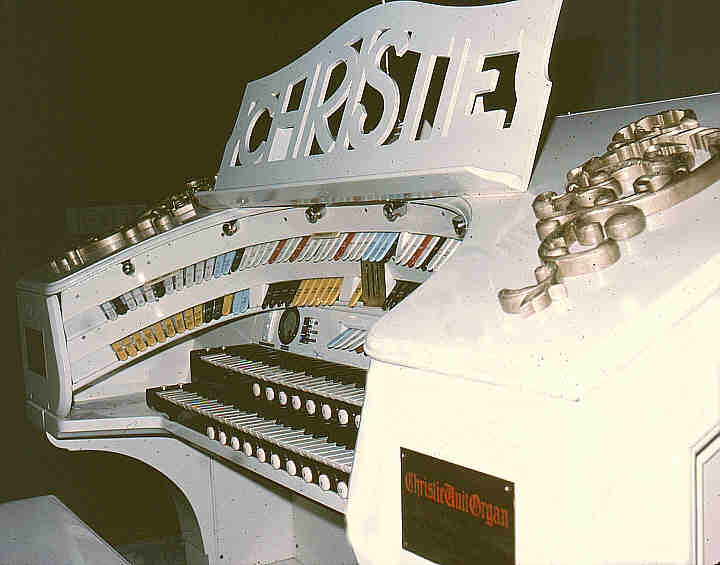
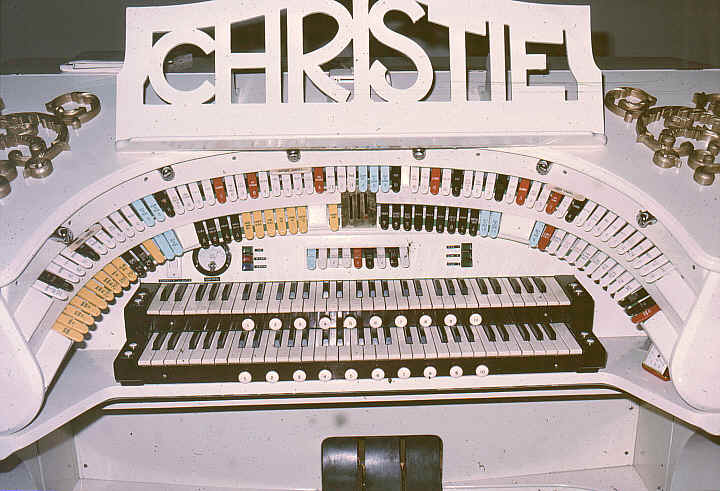
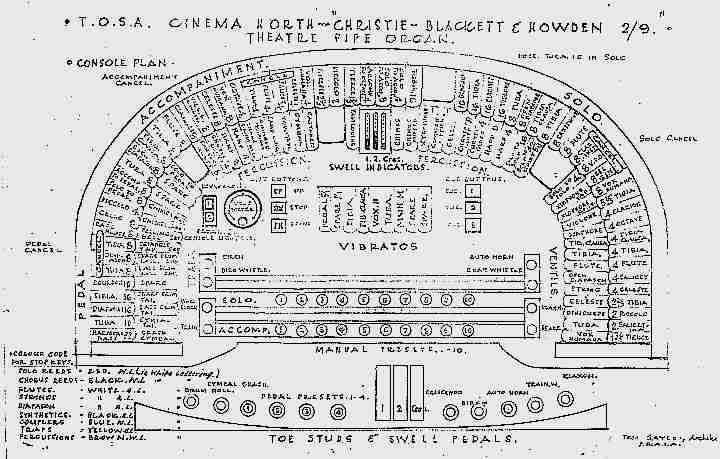
A rather faded diagram prepared by Tom Sayer for the console layout
Cinema North seated 740 on a single level. The organ was divided between two chambers on either side of the proscenium:
Main chamber (left): Diapason (16ft octave HN&B), Tibia Clausa (Wurlitzer), Viol d'Orchestre, Céleste (Tenor C), Stopped Flute (metal, bass octave wood), Chrysoglott (believed to be Blackett & Howden, but may be Christie)
Solo chamber (right): Tuba, Tibia, Clarinet, Vox Humana, Xylophone, Chimes, Glockenspiel (Compton), traps and effects.
Unenclosed (rear of stage): Tibia Bass (Compton - 12 pipes), Harp (Aeolian), Xylophone (Christie), Bass Drum
The console, painted white and gold, decorated with the ormolu mouldings once fitted to the Wurlitzer console at the Capitol, Melbourne, was installed on a slow lift rising through a trapdoor in the left-hand side of the front of the stage apron. The stopkeys, all new, were coloured as follows:
Tab Colour- Lettering
Solo Reeds Red- White
Chorus Reeds Black- White
Flutes/Tibias White- Black
Strings/Diapason White- Red
Synthetics Black- Red
Couplers Blue- Black
Percussions Brown- White
Traps Yellow- Black
Electronic tremulants were fitted in place of the originals, which were subsequently offered for sale. [Vox, July, 1975, p. 9] Hoever, they were not disposed of and were restored to the organ when it was moved to Coburg Town Hall:
"The organ makes use of 7 tremulants, 4 are the original B&H units, 2 are by Christie, (one a replica) which are used on the two Tibia ranks, only the one electronic unit is used being on the String ranks. (VDO and Celeste)" [e-mail from W Worley 7/11/2001]
In 1979, a new treble chest was added so that the (Wurlitzer) Tibia could be extended to 2 ft pitch. [Vox., October, 1979, p. 6]
The organ was a popular venue for TOSA's concerts, and was also regularly played during film shows. However, in the late 1980s, there were strong rumours that the theatre was to close, and that the organ would have to be removed. [SA TOSA News, TOSA (SA), Adelaide, May, 1988, p. 6]That sale was, however, cancelled, and the theatre continued for another three years. In June, 1991, it was announced that the theatre had been sold, and that the organ would have to find a new home. [SA TOSA News, TOSA (SA), Adelaide, June, 1991, p.8]
The organ was removed into storage by TOSA; in 1992, it was reported that Cinema North had been demolished, and that there was a possibility that the organ might be relocated to Coburg Town Hall. [SA TOSA News, TOSA (SA), Adelaide, Jan/Feb, 1992, p. 10] Further news at the end of 1993 was that agreement had been reached "in principle" for the organ to go to Coburg Town Hall; it was then in store in a Coburg Council depôt. [SA TOSA News, TOSA (SA), Adelaide,October, 1993, p. 6]Plans were however, put into abeyance in 1994, following local government reorganisations which involved the merger of the cities of Coburg and Brunswick.[SA TOSA News, TOSA (SA), Adelaide, September, 1994, p.4] Fortunately, the move to Coburg eventually proceeded and the organ's subsequent story can be found here.
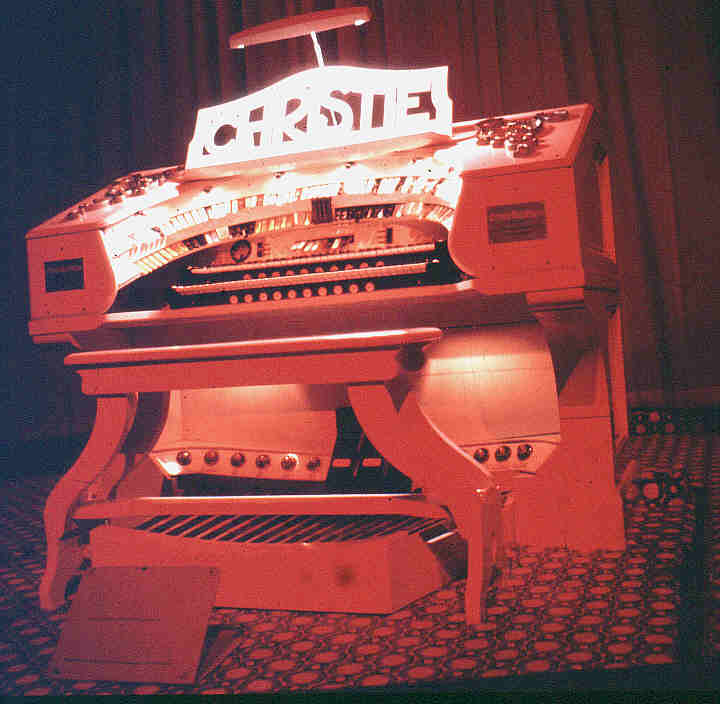
Photos: John Thiele
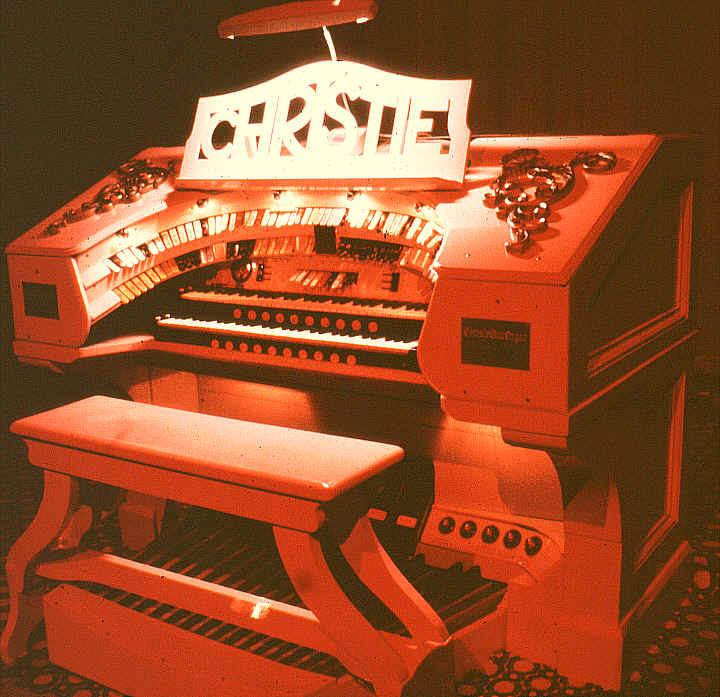
As the Cinema North organ was used extensively for practice and learning purposes by TOSA members, John Atwell was asked to prepare a set of combination settings that would be the defaults for the instrument. As these may be of interest, I have included them below, with John's comments:
